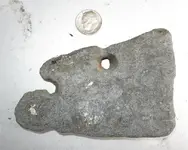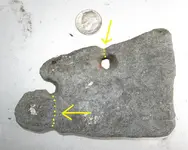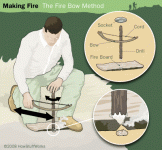lenmac65
Silver Member
- Joined
- Jul 28, 2009
- Messages
- 2,825
- Reaction score
- 9,142
- Golden Thread
- 3
- Location
- Massachusetts
- 🥇 Banner finds
- 3
- Detector(s) used
- Garrett AT Pro, Equinox 800 (as of 10/2019)
- Primary Interest:
- Metal Detecting
This is a rock my father-in-law found while shellfishing in about 10 feet of water off the coast of Rhode Island. He kept the rock due to the curious looking hole, the squared edge, and the marks on its face that makes it look like it has been worked a bit. The stone is about 1/2 inch think and solid feeling (most stones are, I suppose). The hole is somewhat conical and has what looks like a worn groove on the edge. I was thinking this might be a Native American fishing net weight, but was hoping to get some other opinions. What do you think? Any insights would be most appreciated. Thanks.







